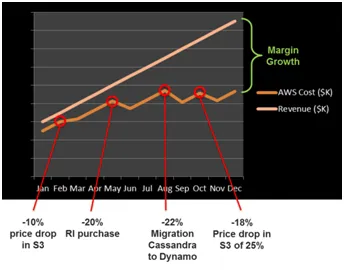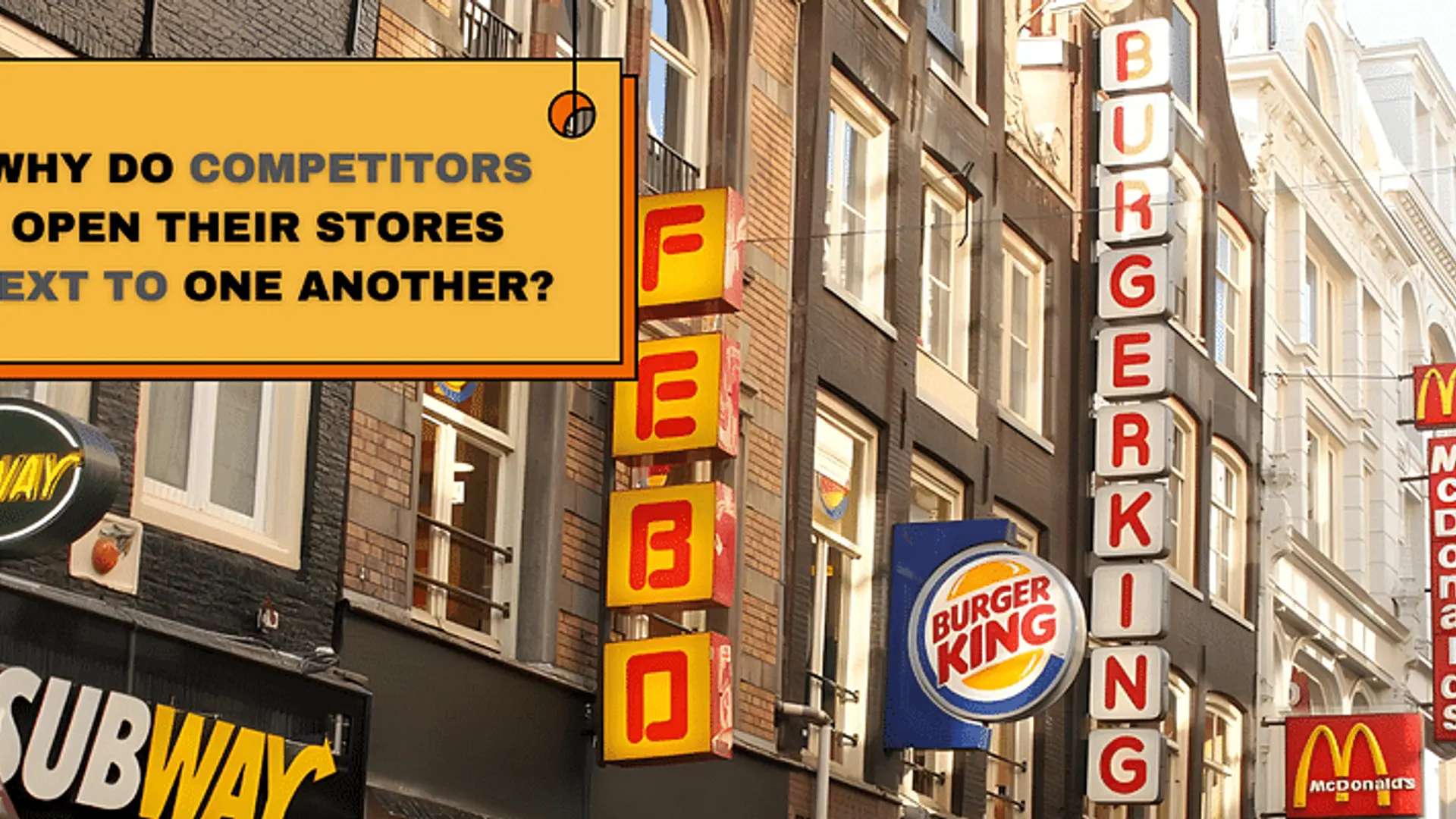How innovation in the cloud can power margin growth
Growing your business while shrinking your costs. How do you do that? This post explores how technical and commercial innovation help startups increase their margin and ultimately reach profitability. It builds on the case study of a successful Indian startup that leveraged innovation from AWS to lower their costs whilst growing revenue. Learn more about how to lower unit costs while scaling your startups at the AWS Cloud Kata on December 14 in Mumbai.
Most pitch decks that investors receive from startups include the same slide: the infamous ‘hockey stick’ that show either uptake of their services or users or revenue growth exponentially to the far right corner of the graph. Regardless of whether the growth is realistic, what the graph doesn’t show is that the business costs escalates as fast or even faster. The result? Unit economics that show zero or negative margin.
Amazon Web Services (AWS) has been actively working with startups to help them lower unit costs and accelerate their journey to success. Lowering costs helps startups to spend more on ‘growth hacking’, generate more revenue as well as increase margins. Startups can lower their costs by using three levers:
- Economies of Scale
- Pricing Models
- Cost Aware Architecting
Let’s look at these by using an example of a real-life Indian startup where these three levers came together to significantly improve the unit economics of the business. This startup, let’s call them Acme, is an Enterprise software provider backed by a leading Indian VC, with customers across the globe. Their strong technical team consciously focused on optimizing their architecture and lowering their cost base. Below is a graphical representation of what they did.

First of all, economies of scale. As AWS grows it user base, its economies of scale allow it to lower its own costs. These cost savings are passed on to their customers in the form of price reductions. It has lowered its prices 38 times. For our startup example, which uses a lot of Amazon Simple Storage Service (Amazon S3), a 10% price drop in early 2012 led to significant cost savings. In November 2012, AWS lowered the costs of S3 again, this time by 25%. These price cuts went straight to Acme’s bottom line.
The second lever to drive down costs is the various pricing models that can are available. The Amazon Elastic Compute Cloud (Amazon EC2) is mostly consumed through an on-demand, pay-as-you-use model. However, there are other models available that can result in significant cost savings. One such model is called ‘Reserved Instances’ or RI’s. Used for base workloads or committed utilization, it allows a startup to make a low, one-time payment to reserve capacity and the customer receive a significant discount on the hourly charge. Acme worked with the AWS team in Mumbai to assess which and how many EC2 instances would benefit from an RI purchase, which helped them to save 20% of their EC2 costs.
The final way to lower costs is often overlooked and yet the most powerful: cost aware architecting. Many developers and engineers optimize their code base and architecture for performance, reliability, security, etc. The impact of their technical choices on the cost structure of their business is oftentimes not factored into the design decisions, but doing so can in fact significantly lower costs. Many startups have done well here. Some examples: optimize your code base to effectively run on smaller instance types, which are often one of the most cost-effective options. Storing static content not on your servers but in an object store and then using a content distribution network to reduce the number of API calls to your virtual servers, which in turn allows you to reduce the number of instances you pay for. Cache your database tier to minimize the required size of your master database. And so on.
One aspect of cost aware architecting is including managed services in your architecture, rather than building everything yourself. Our startup example initially ran their no-SQL database Cassandra on EC2. Although it performed well, it was very resource intensive, which increased the EC2 costs. Acme decided to migrate from Cassandra to Amazon DynamoDB, which is AWS’ no-SQL database service. This migration helped them save about 22% of the costs for their database tier.
AWS is known to innovate at a fast pace for its infrastructure and services. It also innovates by offering new commercial models that can deliver cost savings when used appropriately. Combining these two types of innovation with their economies of scale has allowed startups to increase their margin as they scale up their business. In our case study above, Acme significantly benefitted from the three levers as discussed above: they achieved an overall unit cost reduction of 54% in one year.
If you'd like to learn more, please visit ….. and sign up for the AWS Cloud Kata in Mumbai on December 14.
Pieter & Joe from AWS are available on our discussion forum - YS Buzz - to answer all your queries on cloud computing. Post your questions here.







